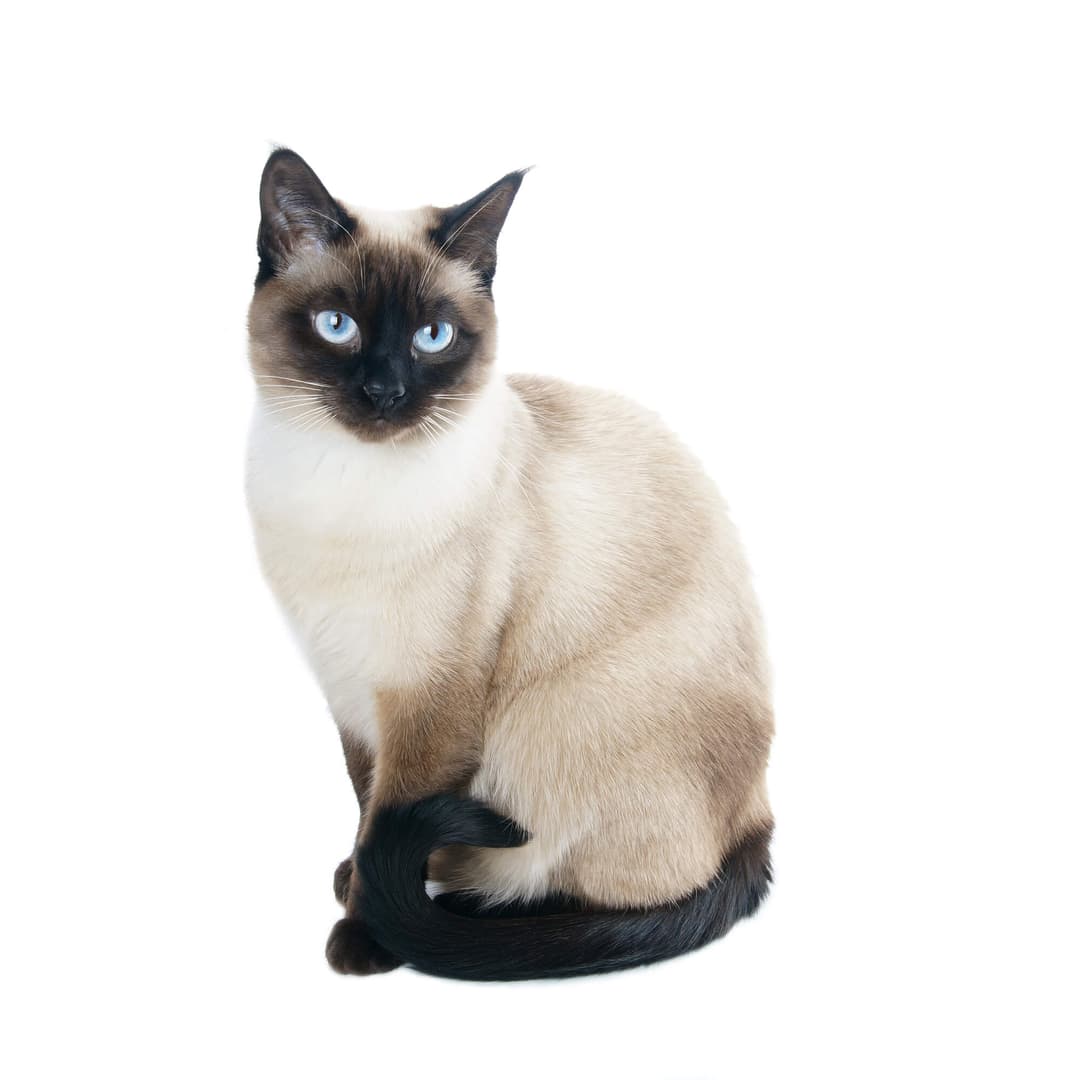Discover your cat's connection to this breed and 20 others


Discover your cat's connection to this breed and 20 others



Thai Siamese cats form strong bonds with their families and are known for their loyal and affectionate nature. These clever, inquisitive, and incredibly athletic felines love being in the center of all the action. They have big personalities and aren’t afraid to tell you all about it!
Who is considered royalty in the world of cats? The Thai Siamese of course! Also
called the Siamese, this feline’s charm and striking appearance helped it earn a
royal status and keep it for centuries. One recognizable display is a high contrast
colorpoint coat pattern with dark fur near or on the face and ears, as well as their
legs and tails. However, there are four possible color combinations that include
chocolate point, seal point, blue point, and lilac point. The Siamese is an outgoing,
chatty breed that is famous for its remarkable blue eyes, noticeably large ears, and
its sleek and muscular body. These cats adore love and affection, and in return
provide loyal companionship.
Originating from Thailand (formerly known as Siam), it is believed that the breed
then made its way to Europe in 1884. British Consul-General Edward Blencowe
Gould brought a breeding pair of cats from Bangkok which he gifted to his sister,
Lilian. Cat fanciers increasingly imported cats from Thailand, gradually forming the
foundational breeding pool for the Siamese in England. In 1878, thefirst Siamese
cat was supposedly given to Lucy Webb Hayes, First Lady and wife of President
Rutherford B. Hayes, by U.S. Consul David Stickles.
Thai Siamese are very affectionate and intelligent cats, with a distinctly outgoing nature. They seek and enjoy the company of humans as well as other cats. They tend to strongly bond with one person in the family. These kitties are very vocal and will often demand your attention with a loud, low-pitched persistent voice that has been nicknamed "Meezer".
Siamese and Siamese-derived breeds have higher mortality and morbidity rates in comparison to other cat breeds. The Siamese is known to be at a higher risk for neoplastic and gastrointestinal diseases. The pointed pattern observed in Siamese cats is a form of partial albinism, caused by a mutation in tyrosinase. This mutation is linked to abnormal neurological connections between the eyes and the brain and can result in crossed eyes. They are also prone to lung infections, feline OCD, vestibular disease, and Feline Hyperesthesia Syndrome. Some published studies indicate that Siamese cats are at a higher risk for diabetes mellitus.
The gemstones of the cat world. Their traditional name in Thai is ‘Wichien Maat,’ which is said to translate to “diamond and gold” or “moon diamond”.
Fascinating felines of history. In Bangkok’s Thai National Library, it is said that there are manuscripts from the 1700s called the “Cat Book Poems” (Smud Khoi in Thai), with illustrations of cats that look very similar to well-known seal points of the Thai Siamese. All Siamese kittens are born white and receive their color points as they grow.
The Royal “Watchcats”. Traditional Siamese cats used to have kinks in their tails. It is thought that this is because a Siamese cat was tasked with guarding a Royal Chalice, and that it developed a permanent kink in its tail by wrapping it tightly around the goblet. Another story has it that a princess used the tail of the Traditional Siamese as a hook to hang her jewelry, so it wouldn’t get stolen while she bathed!
Royal gifts of the cat world. In addition to President Hayes’ gift of a Siamese cat, Queen Elizabeth II was also given a seal point Siamese kitten as a wedding present upon her marriage to Prince Philip, Duke of Edinburgh.
The International Cat Association (TICA) “Introduction to the Thai”
FETCH by WebMD "What to Know About the Thai Cat Breed"
Recommended by top vets with decades of experience
21 breeds
64 genetic health markers
50 genetic trait markers
